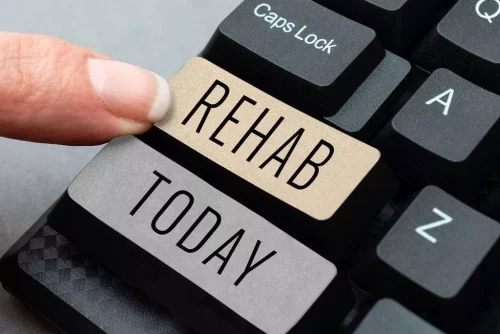
But as you continue to drink, you become drowsy and have less control over your actions. If you’re asking yourself, “Am I an alcoholic?” there are ways to find out. The DSM-5 has 11 criteria to determine if you have an AUD as well as its severity. There is also a self-assessment questionnaire that might help you know if you have a problem. If you accompany someone to an appointment, support them to get information that is simple and easy for them to understand. For example, what are the long-term health risks of being alcohol dependent and what support is available to them.
Setting Healthy Boundaries in Relationships
- Family therapy helps rebuild trust, improve communication, and address any emotional support gaps caused by alcohol-related problems.
- Hangovers also cause problems like missed class or work, low-quality work or schoolwork, and lost productivity.
- Though it has many possible causes, the physiological effects of alcohol withdrawal can be enough for some people to continue drinking heavily and start a dangerous cycle.
- You may consider intervention with other family members if you can’t handle it alone or your loved one is unwilling to seek help.
Even if nothing bad has happened — yet — this is a warning sign. Understand that you cannot help someone with alcoholism if they are unwilling to get help. Do not blame yourself if your attempts are unsuccessful, and try not to threaten or punish them for their refusal. Also, ensure you don’t enable them or cover for them if they get into trouble how to recognize signs and symptoms of alcoholism and alcohol abuse due to their behaviour.
Long-term damaging effects of alcohol abuse
- It should not be used in place of the advice of your physician or other qualified healthcare providers.
- Whether you choose to go to rehab, rely on self-help programs, get therapy, or take a self-directed treatment approach, support is essential.
- Outpatient programs are often part of aftercare programs once you complete an inpatient or PHP program.
- The exact mechanism that causes people to misuse alcohol is unclear.
- If willing, a person with an AUD can get stabilized with recovery.
Involving loved ones in the treatment process helps reduce feelings of isolation and encourages lasting change. Alcohol use disorder is a medical condition formally recognized in the Diagnostic and Statistical Manual of Mental Disorders (DSM-5). It encompasses a spectrum of problematic drinking habits, ranging from mild to severe. There are times when you want a drink so badly, you can’t think about anything else until you get one.
Make A Decision That Will Change Your Life
And yet alcoholism—more accurately called “alcohol use disorder”—falls along a spectrum that ranges from mild to severe. People with severe cases might look like the stereotypical alcoholic. But with people who have mild or moderate alcohol use disorder, the signs might not be so obvious.
Helping Someone with a Drinking Problem

This is available from a range of support groups and professional services. Genetic, psychological, Alcoholics Anonymous social and environmental factors can impact how drinking alcohol affects your body and behavior. Theories suggest that for certain people drinking has a different and stronger impact that can lead to alcohol use disorder. Alcohol use disorder is a pattern of alcohol use that involves problems controlling your drinking, being preoccupied with alcohol or continuing to use alcohol even when it causes problems. This disorder also involves having to drink more to get the same effect or having withdrawal symptoms when you rapidly decrease or stop drinking. Alcohol use disorder includes a level of drinking that’s sometimes called alcoholism.
- Recovery is a lifelong process that benefits greatly from a strong support network.
- Though alcohol consumption can vary among people, alcohol addiction is characterized by drinking large amounts of alcohol over long periods.
- For example, any alcohol consumption by a pregnant person can be considered alcohol misuse, as well as drinking under the legal age of 21.
- You probably have a stereotypical image of someone who is an alcoholic.
- This could push them away and make them more resistant to your help.
- Alcohol abuse also deteriorates an individual physically and emotionally, so they may find their daily activities more challenging.
Excessive drinking covers binge drinking, heavy drinking, underage drinking, and drinking while pregnant. Adolescents who have developed a positive expectancy or perception about alcohol are more likely to develop an alcohol use disorder. Wrong or insufficient education on the dangers of teen alcohol abuse is often responsible for the positive expectancy that fuels alcoholism. Early childhood behaviour can also be a pointer to teenage alcohol abuse.
One tool is known as CAGE – a questionnaire that measures the severity of a drinking problem. If you answer “yes” to two or more CAGE questions, you should seek professional medical assistance. The primary symptoms of stage four include all-consuming alcohol use, health problems, and dangerous withdrawal symptoms. End-stage alcoholism, also known as late-stage alcoholism, is the most severe. https://ecosoberhouse.com/article/the-connection-between-alcoholism-and-anger/ The primary symptoms of stage three include high tolerance to alcohol, physical symptoms, and more obvious drinking behaviors.

The effects may vary based on factors like genetics, age, overall health status and the amount/frequency of alcohol consumed. Individuals in the intermediate familial subtype are, on average, age 38 and are usually employed. About 50% of these individuals are from families with multigenerational alcoholism, and almost all have experienced clinicaldepression. Unless you have religious or personal restrictions, a few drinks with friends or a glass of wine with dinner is usually not an issue. Aftercare programs, including alumni groups and ongoing counseling, are critical for maintaining sobriety.

If your pattern of drinking results in repeated significant distress and problems functioning in your daily life, you likely have alcohol use disorder. However, even a mild disorder can escalate and lead to serious problems, so early treatment is important. If you’re struggling to stop or control your alcohol intake, you may be an alcoholic or have a drinking problem. This is because alcohol overloads your brain’s reward center, leading to intense cravings and alcohol withdrawal. If you can, talk honestly with the person you’re concerned about, and try to persuade them to see a doctor. It can be very difficult for people who are dependent on alcohol to admit they have a problem but listening, being supportive, patient, open and non-judgemental can make them feel safe.
